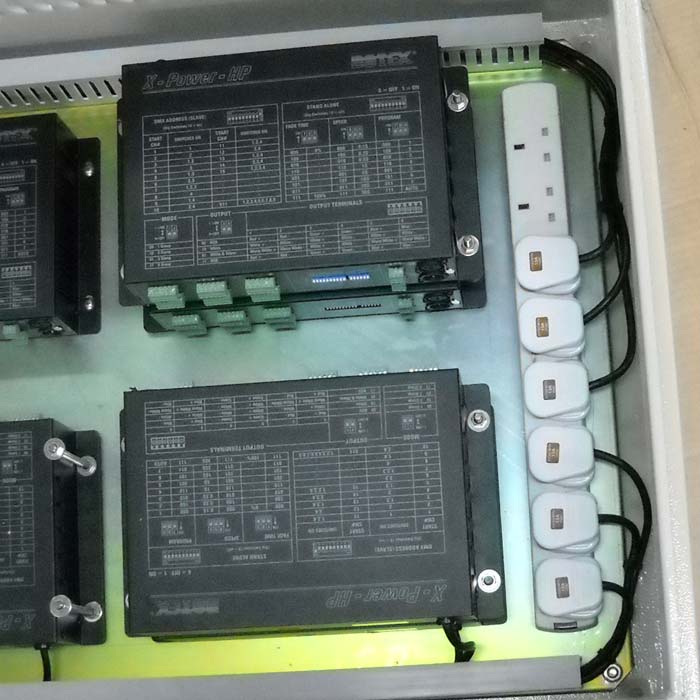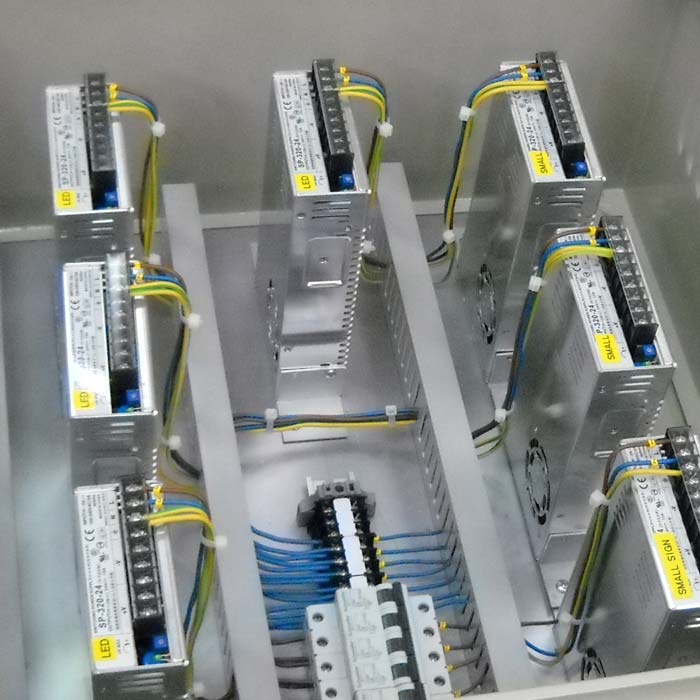Ermenegildo
Zegna
Sydney
This pervasive retail brand can be found in the CBD of most major cities in every continent of the world. The illuminated black and white façade design is the signature of the brand. Another store was about to open in Australia, set among neighbours of retail royalty in the heart of Sydney.
OUR BRIEF
Retail façade lighting is beset with systematic hazards and difficulty. Space is always at a premium every millimetre of the design is squeezed by competing imperatives. Display area, customer space, back of house and changing rooms all vie for existence on a floor plan that commands a stellar rental price.
Competing in that mix is the inevitable illuminated façade that is a vital expression of the retail brand. It will be back-lit and every millimetre of depth between the outer glass surface and the inner wall will be fought for, sensible or not. Access for maintenance will be compromised and risks will often be taken by the client so that if maintenance is required, drastic measures such as de-glazing the façade after hours will be required.
The build-up of heat within the façade cavity may also be problematic and there will be resistance to ventilation because of is cost and space as well as concerns about the ingress of dust and lint.
The fit-out of a high end shop will also be very compressed, often unrealistically, because the cost of renting retail space that is not open for business will be crippling. Rushing can often effect the integrity of the lighting installation as the conditions are often compromised.
Retail façade lighting then, is inherently perilous.
Ermenegildo Zegna in Castlereagh Street, Sydney would be no different.
Our brief was to follow a well-established branded façade design that called for the back-lighting of the signature pinstripes in black glass panels and the illumination of diffused glass soffits. There were internal and external facades and internally illuminated signage to be dealt with. An architectural decision create interleaved panels that cross each other in plan at angles, meant that the depth between the glass and the back pans would vary so that the lighting at narrowest extreme would be too close and at the widest, too far away.
Nothing different to the system the Ermenegildo Zegna use all over the world, so how could Illumination Physics make a difference, how could we add value?
OUR SOLUTION
On the face of it this project was not complex, two types of linear LED would be required, one for the pinstripes and one for the soffits.
Given the difficulty and cost of any maintenance, quality and reliability must be paramount. Quality is often a function of cost and here Illumination Physics enjoys an advantage. Because we are the designer and manufacturer of our own lighting equipment, out procurement chain is shorter and more efficient. We use no distributors or dealers so there are no third party margins within our pricing.
Consequently a specific product of a certain quality from Illumination Physics will be more cost effective than an equivalent product that is part of the typical procurement chain of our competitors.
We can use this advantage to improve the product without over pricing and this was to form part of our key strategy, a break from High Power LED!
Hitherto, our contractor customer had pervasively used a high power product comprised of a single Lumileds LED mounted on a small circular pad. These would be connected in strings by hand soldered two core wiring at approximately 120mm centres. We dislike this technical approach for many reasons;

Optically it is not logical to try to evenly illuminate a thin pinstripe with a string of high power nodes. The nodes tend to create hot spots because they are spaced far apart for reasons of cost. This means that the distance between the LED node and the glass should exceed 150mm, regardless of the type of diffusion used. That would not be possible in this Sydney design, because it was mostly far less than ideal.
From a quality control perspective, hand soldering is very poor practice and should only be used for experimental prototypes. The duration, heat and amount of solder used will all be fallible factors.
The efficiency is also poor, in effect the entire cavity is flooded with mostly wasted light when it is only the narrow pinstripes that need to be illuminated.
The solution was obvious, a low power LED rigid strip solved all of the problems.
The LEDs are populated densely on the circuit board so the hot spot problem was eliminated. The distance between the LED and the glass could tolerate greater variations.
The light could be used more efficiently because the LED strips could be aligned exactly with the Pinstripes.
The integrity of the product would be much higher as all of the components would be placed on the PCB by a ‘pick and place’ robot with totally repeatable accuracy.
Less electricity would be used and less heat generated. All of the benefits above were achieved at a lower cost to the high power node idea.
Installation on site would be expensive and affected by other trades, so any level of prefabrication was highly desirable, not only from a cost and time perspective but also accuracy. According the LED strips for the pinstripes were assembled in the façade panel factory and tested prior to shipping to Sydney.
So much for the pinstripes.
The back-lighting of the soffits should have been simple but the coordination with other trades was poor. The light path between the luminaires and that glass diffuser was often blocked by ad-hoc structural brackets and it was necessary to redesign the high power LED linear wash lights we had specified so that the shadows could be eliminated.
This required numerous obscure custom lengths to be fabricated at great speed and a variety of lenses to be used in order to produce an even level of illumination in the soffit glass.
Illumination Physics has the advantage of agility and speed when problem solving is required. Our project specific philosophy produced a great result, something that an ‘off the shelf’ manufacturer of standard products could not have achieved.
In order to further reduce installation work on site, all of the power supplies for the pinstripe LED and the drivers for the soffit LED were pre planned and installed into cabinets before they were shipped to Hong Kong.
In order to provide a complete package, Illumination Physics provided and installed all of the LED for the illuminated signage. This ensured consistent colour temperatures and simplified the procurement for the client. The façade lighting was delivered and installed on time by our Australian installation team.
PRODUCTS
- 1 x 587 metre rigid series LP led strips
- 59 x Linear Vario custom length 2W led fixtures
- 10 x HP led driver 48VDC
- 41 x power supplies







